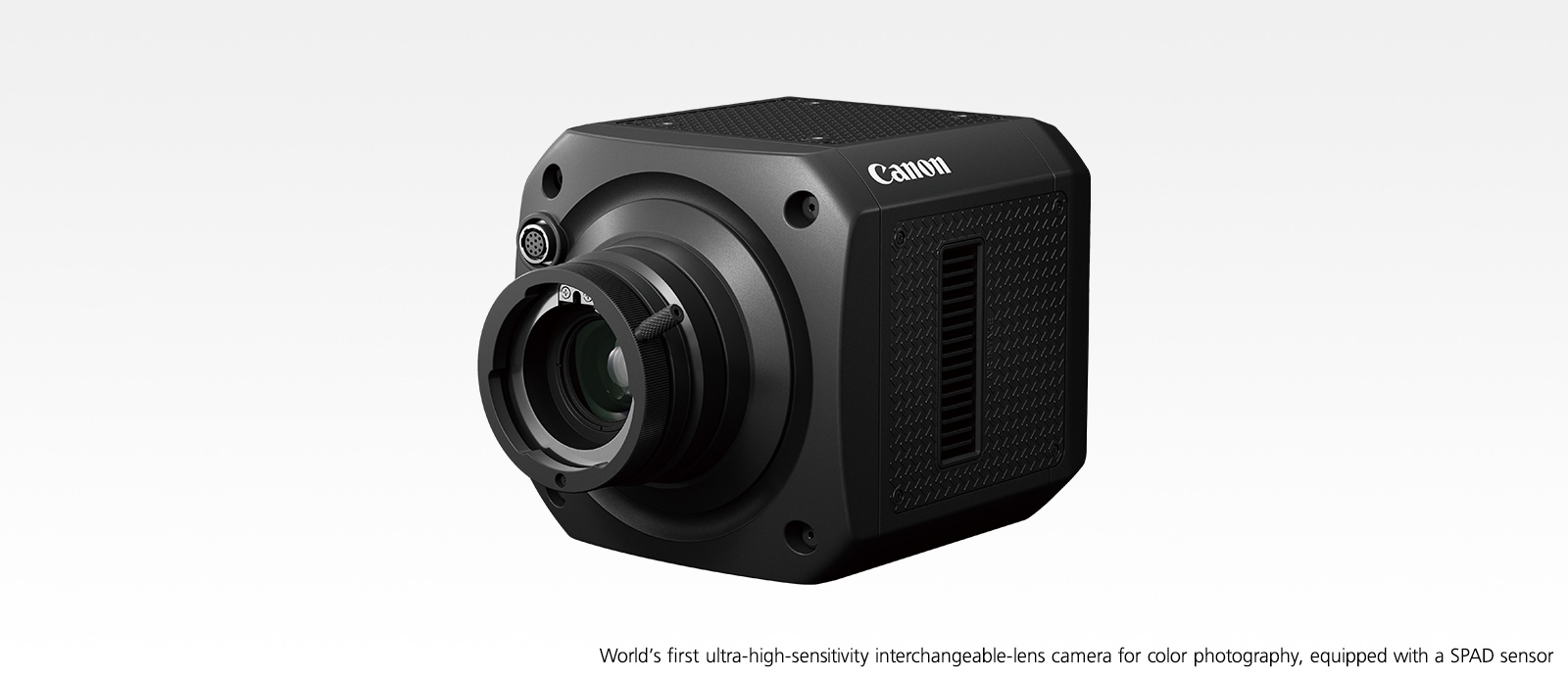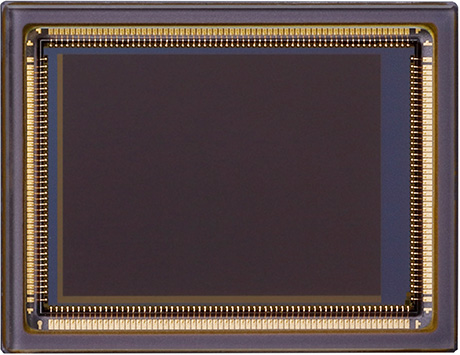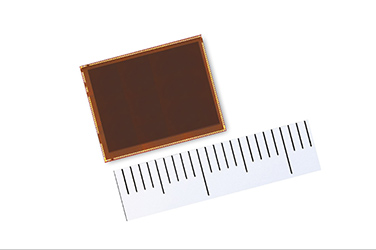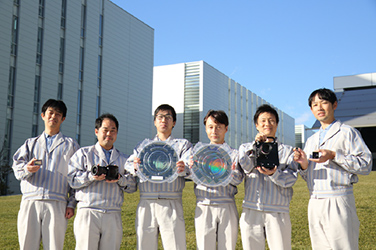

Camera That can Even Confirm the Type of Vessel in the Dark Night
Ultra-high-sensitivity Camera
A high-quality, ultra-high-sensitivity camera cannot be made with a high-performance sensor alone. Canon created the product by combining the Canon-developed sensor, lens and image processing technology.
October 16, 2023
Product Development to Satisfy Market Needs
For security along the coastlines, as well as for monitoring critical infrastructure facilities such as power plants, river water levels, and the like, advanced surveillance systems are required to quickly detect targets in extremely low-light environment and at long distances, which are hard to observe with naked eye.

Captured image of the night about 5km away (Lens: CJ45eX13.6B IASE-V H)
To address these needs, Canon has launched the MS-500, the world’s first*1 ultra-high-sensitivity interchangeable-lens camera equipped with a low-noise SPAD sensor. When combined with an ultra-telephoto broadcast lens, it is possible to capture clear color videos of vessels several kilometers away, even at night. Not only can you discover the vessel, you can now also determine what type of vessel it is.
Inside the SPAD Sensor
The CMOS sensors that have been widely used in digital cameras measure the amount of light that accumulates in a pixel during a certain period of time. The problem is that, when stored electrical signals are read, electronic noise mixes in, leading to a degradation in image quality particularly when capturing videos in dark places.
Meanwhile, the SPAD sensor equipped on the MS-500 uses a method called “photon counting”. As soon as a photon enters a pixel, it is converted to an electric charge.Because a photon entering a pixel can be amplified instantly like an avalanche, it can then be read as a large electrical signal.One of the biggest features here is that, since it is possible to count each photon digitally, no electronic noise is produced when reading the data.

Thanks to this, even in conditions like a dark night sky, it is capable of accurately detecting minimal amounts of illumination and capturing clear color images of the subjects.
Product Development Required Much More Than Replacing the Sensor to SPAD
Canon has developed the 1” SPAD sensor, which offers the world’s highest pixel count of 3.2 megapixels*2. A variety of problems had to be resolved to create an ultra-high-sensitivity camera equipped with this sensor.
SPAD sensors have different structure from that of the CMOS sensors used in existing high-sensitivity cameras. To take advantage of the sensors’ characteristics and achieve the maximum performance out of them called for coming up with new ideas regarding electric circuits, image processing, and other areas. For example, when capturing in a low-light environment, a camera with the SPAD sensor without readout noise can clearly capture the shapes of things that were previously unrecognizable due to image noise when capturing with a conventional camera. Accordingly, we gave attention to those details in videos previously ignored, and took a fresh look at all of the issues entailed in creating images—including compensation processing, edge (image contour) enhancing and gradation processing, color processing, and others—and resolved each one of them.
Discover the Innovation (4 minutes 13 seconds)
*In order to view videos, it is necessary to consent to the use of cookies by our website. If the videos are not displayed, please click the "Cookie Settings" and accept cookies.
Advantages That Canon’s Various Technologies Offer
When watching over a harbor at night, you naturally need to be able to track the movements of ships, clearly make out the lettering on hulls, and so forth. It calls for advanced technological capabilities. It is important that the video image has balance. Canon develops and produces the SPAD sensor, broadcast lenses, and camera imaging engines, and the like, and deeply understands their characteristics. The MS-500 makes full use of the characteristics of various devices and the knowledge behind them to turn them into a new product. The balance as a video was achieved through a collaboration with the relevant departments. It draws out the best performance of the sensor and the lens while improving basic performance in terms of clarity, gradation, and color reproducibility.

Approx. 3.2-megapixel 1” SPAD sensor equipped on ultra-high-sensitivity cameras
This time, approx. 3.2-megapixel SPAD sensor to be used for an ultra-high-sensitivity camera is an important first step. Canon will continue to be mindful of what the market needs are as it comes up with superior products and creates new value through its business activities.
- *1 As a color camera equipped with a SPAD sensor. As of July 31, 2023. Based on Canon research.
- *2 Among SPAD sensors for imaging use. As of July 31, 2023. Based on Canon research.




